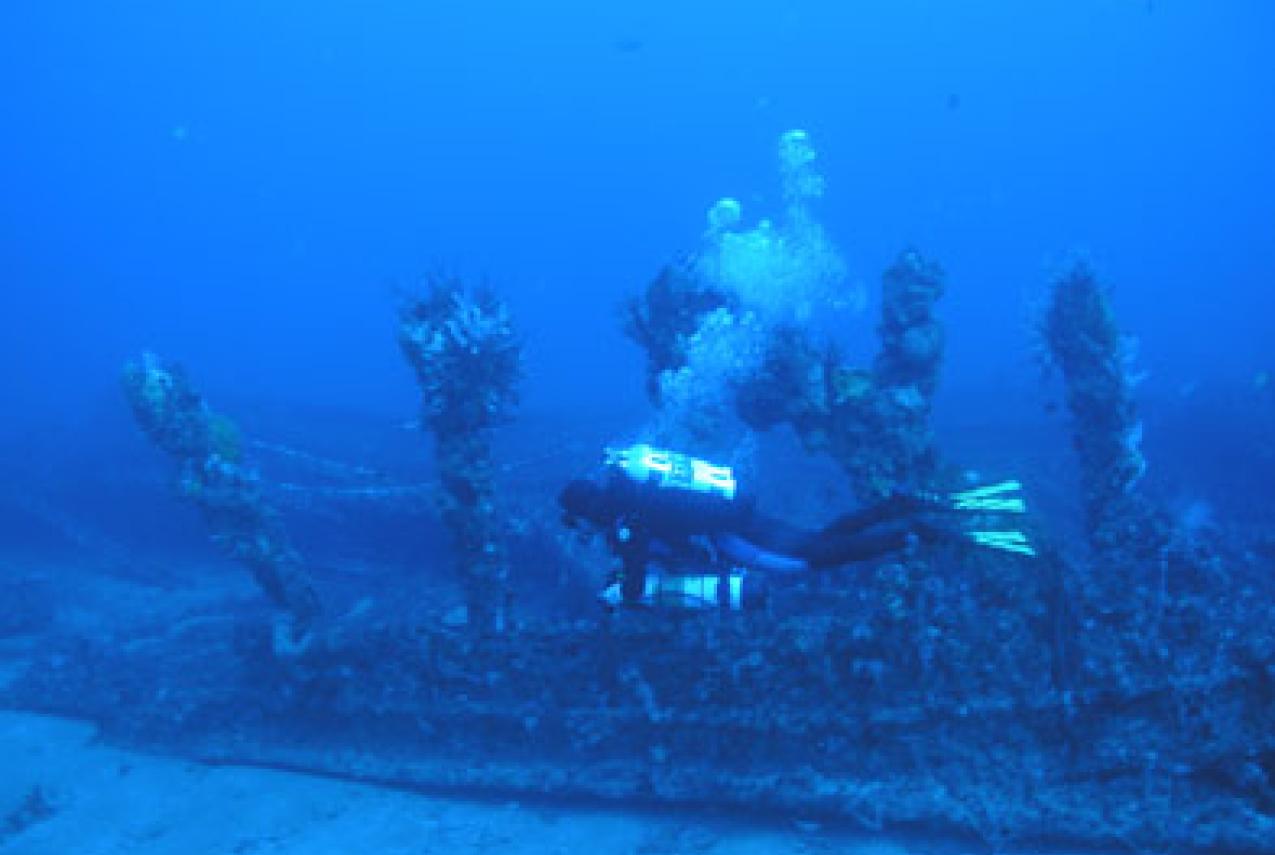Hidden beneath the deep waters off the coast of Rottnest Island is a mysterious graveyard of old unwanted vessels and military vehicles.
As part of the Western Australian Museum’s second year of the Harry Butler Lecture Series: In the Wild West, Head of the Department of Maritime Archaeology, Jeremy Green will take us on a journey to the watery grave and see how aerial surveys, technical diving and remotely-operated vehicles have been revealing its buried treasures.
The Rottnest deepwater graveyard has been used for the last 75 years to dispose of old unwanted vessels that are no longer serviceable. The site, approximately 20km west of Rottnest, was selected as the place where these unwanted vessels could be properly disposed.
“The area is not just the repository of old hulks, but also munitions, military vehicles and aircraft, and even a submarine that were disposed of at the end of the Second World War,” Mr Green said.
Over the past 20 years, there has been growing interest about what might be buried at the site.
“It started with reports to the Museum of wrecks in the 1980s by people fishing in the area, and since then the information has been steadily growing,” he said.
However, the depth of the Graveyard (80-100 metres) has precluded any inspection or diving on these sites using traditional SCUBA equipment.
“With the advent of mixed-gas diving equipment and the rapid development of remote sensing equipment and remotely operated submersible vehicles, the area has become more accessible to maritime archaeologists,” he said.
In 2001, as part of a documentary series made by WA film company Prospero Productions, an aerial magnetometer survey over the Graveyard was carried out and a number of sites were located.
Following this, technical divers have dived on the site using mixed breathing gas, a two-person submersible has explored many of the sites and remotely-operated vehicles have also been deployed.
The talk will include some video footage of these explorations.
“A total of 34 sites have now been located, so far four have been identified, many of them are still a mystery and remain unidentified,” Mr Green said.
“Further work is underway to expand our knowledge of this area.”
Jeremy Green is the Head of the Department of Maritime Archaeology at the WA Museum; he joined the Museum in 1971 and set up the Department. He has worked on excavating the Batavia and other sites in WA. He is a Fellow of the Australian Academy of the Humanities, and in 1986 received the Keith Muckelroy Award for his international work in maritime archaeology. Additionally, in 2007 he was awarded the Rhys Jones Medal in recognition of his pioneering work in the development of maritime archaeology in Australia.
The Harry Butler lecture series: In the Wild West is proudly presented by the WA Museum in partnership with Chevron Australia. The series showcases the work of Museum scientists, curators and associates in the areas of natural and social sciences.
LECTURE: The Rottnest deepwater graveyard
WHEN: Friday 8 July, 6.00pm
WHERE: WA Museum – Maritime, Victoria Quay, Fremantle
BOOKINGS ESSENTIAL: online at www.museum.wa.gov.au/inthewildwest
COST: By gold coin donation.
Teresa Belcher, Western Australian Museum: T. 9212 3856
